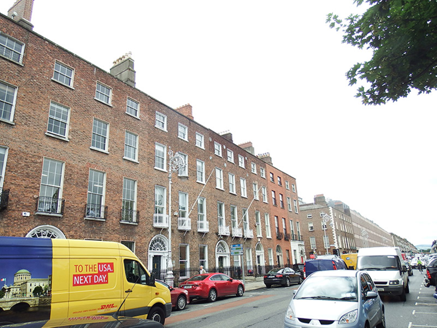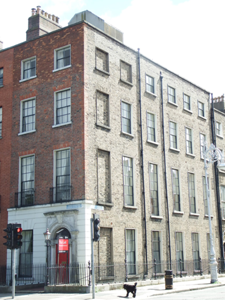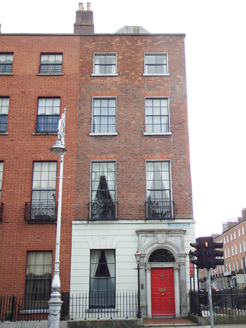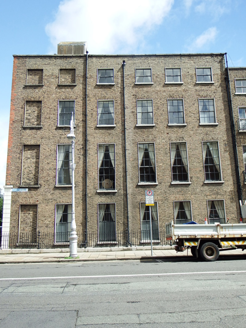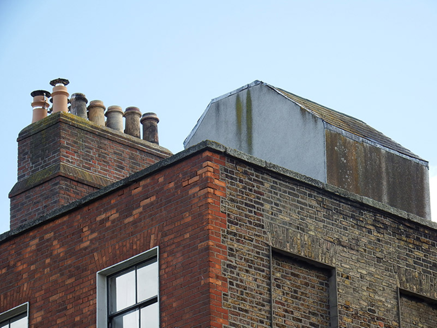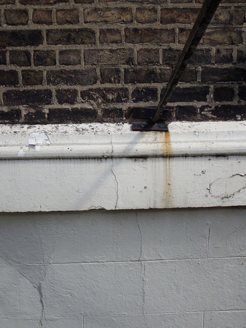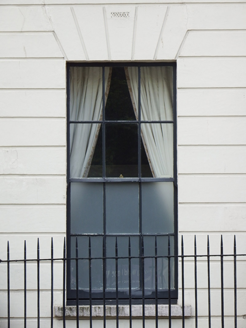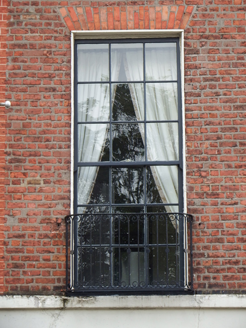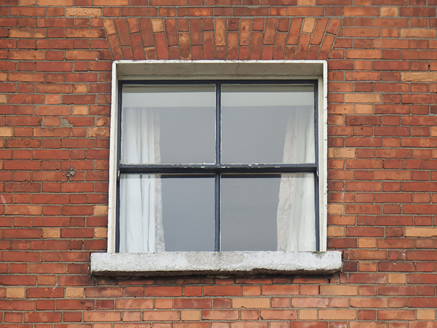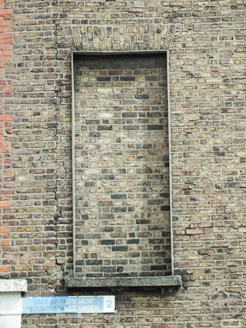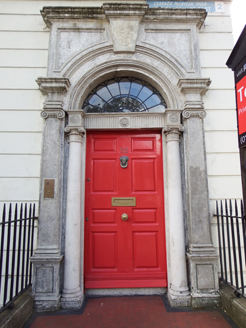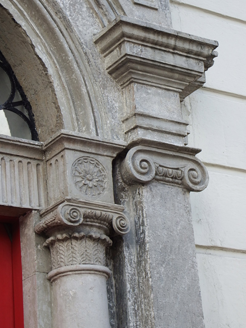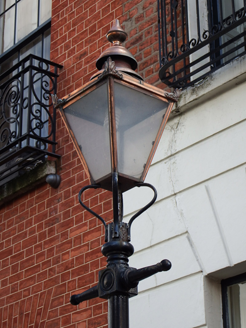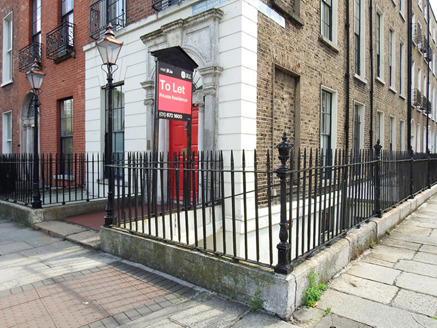Survey Data
Reg No
50100517
Rating
Regional
Categories of Special Interest
Architectural, Artistic
Original Use
House
In Use As
Office
Date
1785 - 1795
Coordinates
316794, 233405
Date Recorded
28/07/2016
Date Updated
--/--/--
Description
Corner-sited two-bay four-storey former house over basement, built c. 1790 as one of group of three (Nos. 50-52), having six-bay side elevation to Mount Street Upper. Now in use as offices. Rear of Nos. 50-52 projects from line of buildings to north. Pitched roof to front span, behind brick parapet with granite coping, hipped to south end, single-pitched roof over third bay of side elevation and hipped roof to rearmost three bays; recent attic addition to second bay of side elevation. Shouldered brick chimneystack to party north wall with clay pots. Concealed gutters, cast-iron hopper and downpipe to south elevation. Flemish bond refaced red brick walling to front, buff brick to south elevation, with painted rendered channelled rustication to ground floor of front, and with painted granite plinth course over painted ruled-and-lined rendered basement walling; rendered to rear (north) elevation of Mount Street Upper bays. Square-headed window openings, diminishing in height to upper floors, having patent reveals and painted granite sills. Timber sliding sash windows with horns, nine-over-six pane to first floor, three-over-three pane to top floor, one nine-over-nine pane to south elevation first floor, blind openings to westernmost bay of south elevation and to top floor of next bay of same elevation, replacement timber casement windows to basement, and six-over-six pane sash windows elsewhere. Decorative wrought-iron balconettes to first floor of front elevation. Round-headed door opening with limestone surround comprising engaged Ionic pilasters on panelled pedestals, moulded cornice over panelled spandrels and over-sized keystone; square-headed door opening having engaged Adamesque Ionic columns, fluted frieze with rosettes, leaded peacock's tail fanlight and eight-panel timber door with brass furniture. Ceramic tiled entrance platform with single granite step to street, flanked by brass lamps on cast-iron standards with decorative detailing. Basement area enclosed by wrought-iron railings with decorative cast-iron posts on moulded granite plinth.
Appraisal
No. 52 Merrion Square forms part of a group (Nos. 50-52) built by paper-stainer George Kent. It was built after 1786, when Lord Fitzwilliam arrived in Dublin to ensure that the east side was 'perfected forthwith and a new street continued therefrom to Leeson Street.' Displaying elegant proportions, decorative ironwork and ornate Ionic doorcases, the group is largely well-retained and contribute to the architectural heritage of this principal Georgian square, and to the wider historic fabric of south Dublin. No. 52 is set apart from the remainder of the group through the ground floor rustication and the addition of a flat-pedimented Ionic door surround. Merrion Square was laid out in the mid-eighteenth century on land belonging to Lord Fitzwilliam. Lined on three sides with eighteenth and nineteenth-century houses, and on the west by the garden front of Leinster House, it is one of the key architectural set-pieces of Georgian Dublin. The relatively homogeneous appearance belies the piecemeal nature of its construction. Indeed, houses on the east side are distinguished from those on the north by narrower proportions, as well as larger and more ornate doorcases.
